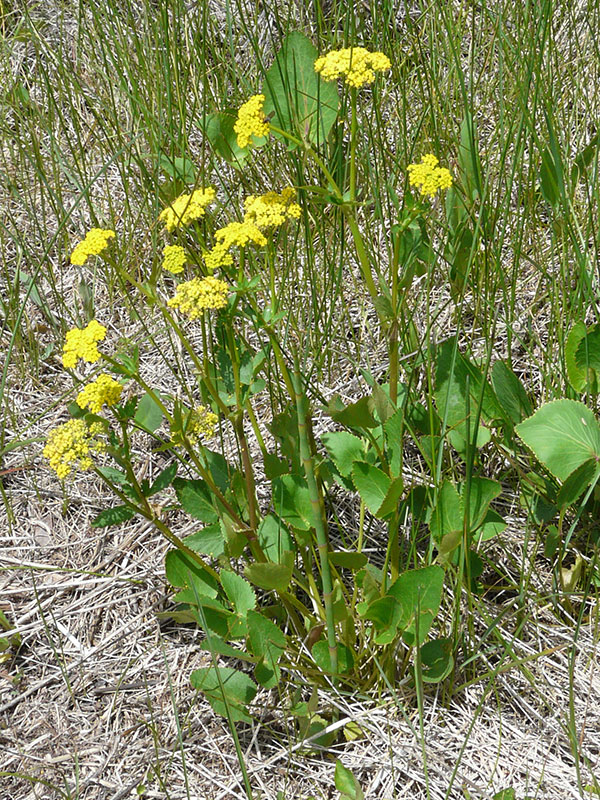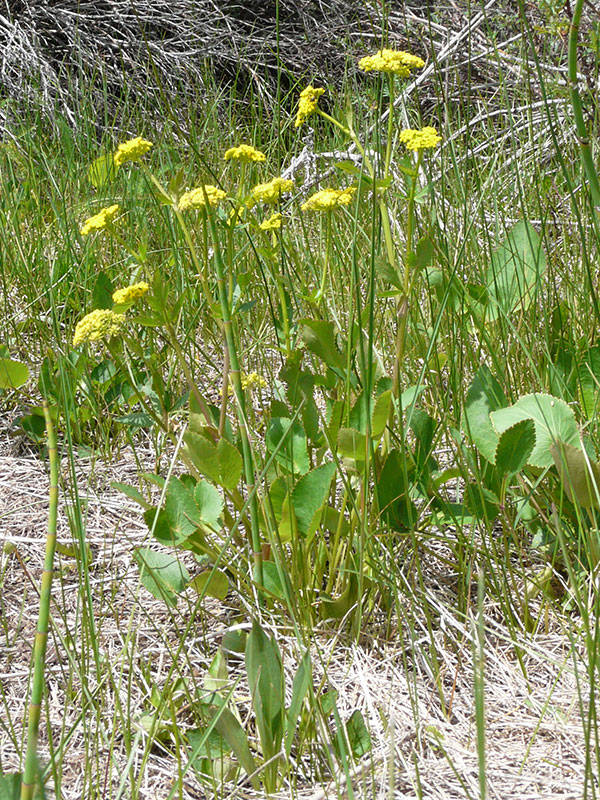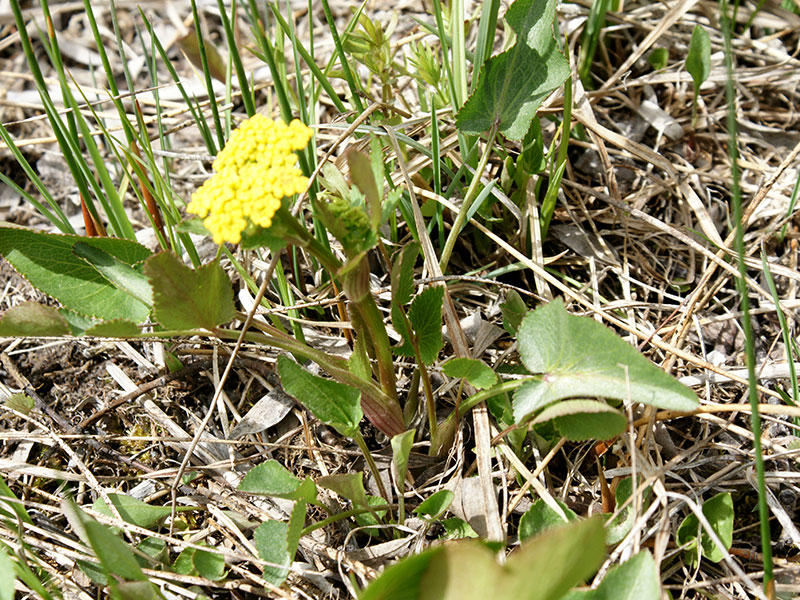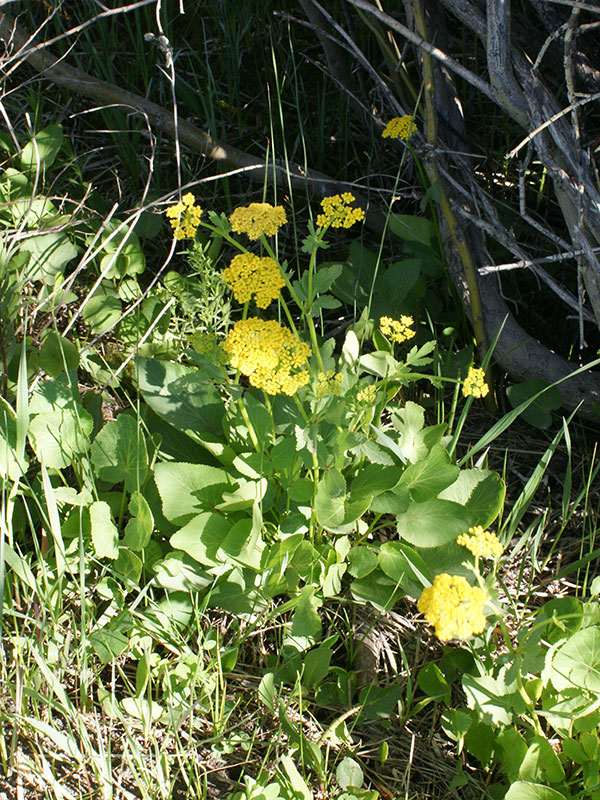Zizia aptera / golden Alexanders
- yellow, compound umbel infloresecence
- basal leaves are heart-shaped
- blooms in early to late spring
Synonym: Zizia cordata
Also known as: heart-leafed golden Alexanders, heart-leaved meadow parsnip, meadow parsnip, heartleaved Alexanders, Meadow Zizia, Zizia
Of all the plants on this site so far, Zizia cordata is certainly a candidate for having the least related information on the web. I doubt that this is because the genus was named after a German botanist, Johann Baptist Ziz (1779–1829). Other than that, most of the information is about buying seeds or maintaining the plants. That, of course, would not be of interest at all if the plant weren’t attractive.
Zizia cordata is one of a bazillion yellow-flowered umbellifers, or members of the “carrot” family. It is a short-lived, branching perennial with reddish stems, but the two most notable field identification features are the heart-shaped basal leaves and tiny, yellow flowers in clusters, gathered into the umbel inflorescence. The latter is not so unusual a feature, of course, but in this case, the flowers are slightly larger and the whole plant is attractive. The 1-3 ft. tall plants may occur singly or in clumps.
Golden Alexanders umbels are typically about 2-3″ across with a dozen (more or less) secondary umbels, a.k.a. umbellets (this is not the name of a girls’ cheerleading group). Each umbellet has about 10-20 flowers. Each flower has 5 yellow petals that barely open, and is less than 1/8″ across.
Golden Alexanders bloom during spring/late spring. At Woods Creek Fen in the Valley, the gallery photos here were taken in mid-June. Two others were taken in late May on S5250W on the way to Fox Creek East. The photo emphasizing the leaf sheath was taken in mid-May on a non-flooded roadside. The flowers themselves have no noticeable floral scent. Each flower is replaced by a small fruit with 5 angular ribs – this fruit is not winged, unlike some others in the family.
The flowers are attractive to many kinds of butterflies as well as other insects with short mouthparts. It is considered a good source of pollen and nectar for those species.
Golden Alexanders occurs naturally in small colonies on wet soils, along stream banks, and in low areas. Although it prefers wet sites, it is – oddly enough – also very tolerant of dry conditions in the summer. It also prefers full sun when it can get it, but is ok with light shade under trees as well.
| Color | |
|---|---|
| Family | |
| Blossom size | |
| Inflorescence size | |
| Inflorescence type | |
| When? | |
| Where? |





